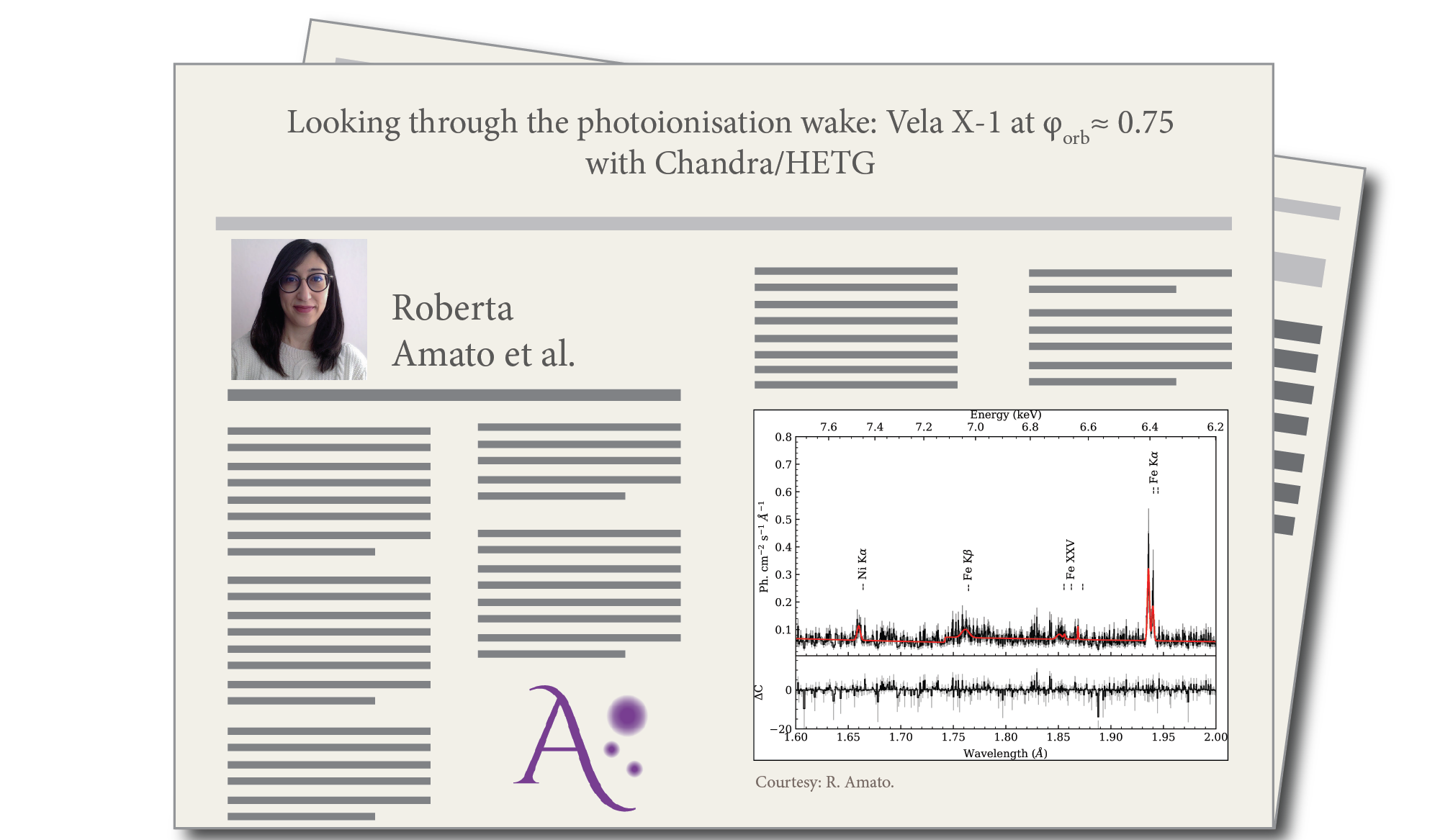
Looking through the photoionisation wake

By Roberta Amato
Vela X-1 is the archetype of wind-fed high-mass X-ray binaries. With an orbital separation of less than two companion stellar radii, this system is so compact that the neutron star is constantly embedded in the wind of the donor star. The presence of the neutron star heavily alters the structure of the wind, resulting in the formation of wakes and in strong changes in absorption, depending on the orbital phase the system is observed at.
We studied the system at the orbital phase 0.75 when the line of sight is intersecting the photoionisation wake - a stream of photoionised matter - which trails the neutron star along its orbit. We performed for the first time high-resolution spectroscopy of Chandra/HETGS archival data, with the aim of characterizing the plasma environment. Coupling canonical plasma diagnostic techniques with the more recent versions of the photoionisation codes CLOUDY and PION (SPEX), we found that the plasma at this orbital phase is mainly photoionised, as expected, but with hints for at least another component. This leads to the idea of a very complex medium, possibly with clumps of colder and denser matter embedded in the hot optically-thin wind of the companion star.
In the future, Athena will considerably improve the characterization of the plasma. In particular, with just a few hundreds of seconds of exposure, the unprecedented energy resolution of 2.5 eV of Athena/X-IFU will allow for disentangling the lines of the Fe Ka doublet, observed in emission at this orbital phase, the Fe XXV triplet, and the complex Fe K-edge/Fe Kb line, resulting in even more significant detections (see Fig). Hence, the X-IFU instrument will deliver highly-resolved spectra with exposure comparable with the neutron star’s pulse period, allowing for pulse-resolved spectroscopy.

